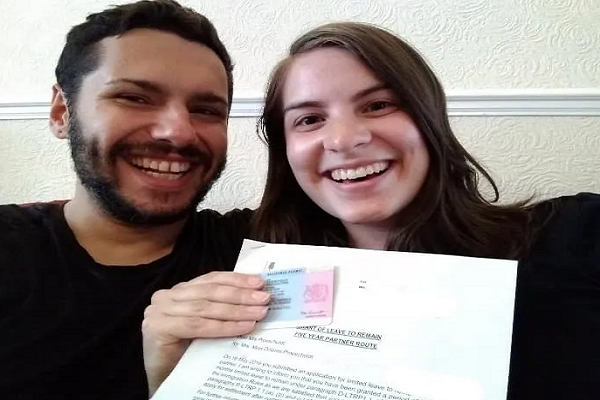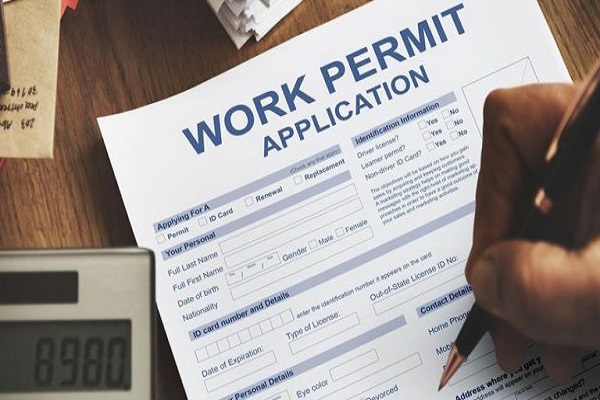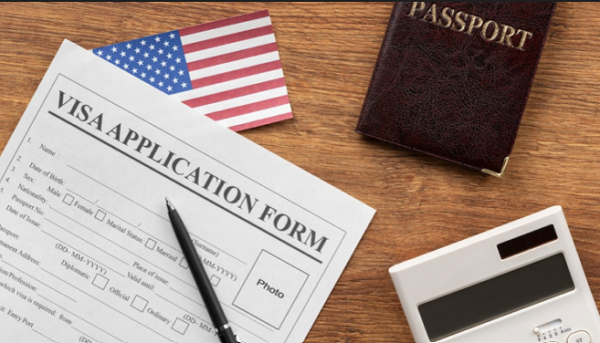The Spouse Visa USA is a crucial immigration pathway for U.S. citizens and lawful permanent residents (green card holders) wishing to bring their foreign spouses to the United States. With global mobility on the rise and the importance of family reunification more significant than ever, understanding the ins and outs of the Spouse Visa USA process is essential.
In this comprehensive guide, we will explore everything you need to know about obtaining a Spouse Visa USA, including types of visas, eligibility, application steps, interview preparation, cost breakdown, processing time, rights of visa holders, and tips to avoid delays or denials.
Understanding the Basics of the Spouse Visa in USA
A spouse visa, also known as a marriage visa or partner visa, is a legal document that permits the spouse of a foreign national to enter, reside, and work in a foreign country for a specific duration. These visas are typically granted to married couples or couples in a genuine and legally recognized relationship, such as a civil partnership or registered partnership.
The Spouse Visa in USA, formally known as the K-3 Visa (for married spouses of U.S. citizens) or CR-1 Visa (for married spouses of U.S. permanent residents), is designed to facilitate the reunification of families across borders. It allows eligible foreign spouses to join their American partners and live together in the United States, with the ultimate goal of permanent residency and, eventually, U.S. citizenship.
Types of Spouse Visa in USA
1. CR-1 Visa (Conditional Resident Visa)
The CR-1 visa, also known as the Conditional Resident Visa, is designed for foreign spouses of U.S. citizens. This visa is initially granted on a conditional basis, valid for two years. To obtain a CR-1 visa, couples must have been married for less than two years at the time of application. After the two-year period, the foreign spouse can apply for a permanent resident status, removing the “conditional” aspect of the visa.
Eligibility:
- The U.S. citizen spouse must be legally married to the foreign spouse.
- The marriage must be bona fide, not solely for immigration purposes.
- The couple must intend to live together in the United States.
2. IR-1 Visa (Immediate Relative Visa)
Similar to the CR-1 visa, the IR-1 visa is intended for foreign spouses of U.S. citizens. However, the key difference is that the IR-1 visa is not conditional. It grants permanent resident status immediately upon entry to the United States, making it a preferred choice for couples who have been married for more than two years at the time of application.
Eligibility:
- The U.S. citizen spouse must be legally married to the foreign spouse.
- The marriage must be bona fide, not solely for immigration purposes.
- The couple must intend to live together in the United States.
3. K-1 Visa (Fiancé(e) Visa)
The K-1 visa is designed for foreign fiancé(e)s of U.S. citizens who wish to come to the United States to marry their U.S. citizen sponsor. After marriage, the foreign fiancé(e) can apply for adjustment of status to become a permanent resident.
Eligibility:
- The U.S. citizen sponsor and foreign fiancé(e) must intend to marry within 90 days of the fiancé(e) entering the United States.
- Both parties must be legally eligible to marry.
- Evidence of a bona fide relationship is required.
4. K-3 Visa (Spouse of U.S. Citizen)
The K-3 visa is intended for foreign spouses of U.S. citizens who are already married but waiting for their immigrant visa petitions to be processed. It allows the foreign spouse to enter the United States while their immigrant visa petition is pending.
Eligibility:
The U.S. citizen spouse must have filed Form I-130 (Petition for Alien Relative) on behalf of the foreign spouse.
Who Can Apply for a Spouse Visa in USA?
To apply for a Spouse Visa in USA, the petitioner (U.S. citizen or green card holder) must meet the following criteria:
- Be legally married to the foreign spouse.
- Be at least 18 years old.
- Be domiciled in the U.S. or plan to reestablish domicile before the spouse immigrates.
- Demonstrate financial capability to support the spouse (meeting the 125% Federal Poverty Guidelines).
The foreign spouse must also:
- Be legally married to the petitioner.
- Be admissible to the U.S. under immigration law.
Required Documents for Spouse Visa in USA
Obtaining a spouse visa involves a detailed application process, which includes the submission of various documents to the U.S. Citizenship and Immigration Services (USCIS) and the U.S. Department of State.
To ensure a smooth application process, you’ll need to provide the following essential documentation:
1. Form I-130, Petition for Alien Relative:
This form serves as the initial petition, where the U.S. citizen or green card holder sponsors their spouse. You’ll need to complete and submit Form I-130 along with the required filing fee. The form requires information about both you and your spouse, including marriage details and evidence of a genuine marital relationship.
2. Proof of U.S. Citizenship or Green Card Status:
If you are a U.S. citizen, you must provide a copy of your U.S. passport, Certificate of Naturalization, or Certificate of Citizenship. If you are a green card holder, you’ll need to submit a copy of your green card.
3. Marriage Certificate:
Include a certified copy of your marriage certificate to establish the validity of your marriage. This document should be translated into English if it’s in a foreign language.
4. Divorce or Death Certificates (if applicable):
If either you or your spouse has been previously married, provide evidence of divorce or the death certificate of the former spouse.
5. Proof of Financial Support:
Demonstrate that you can financially support your spouse by submitting:
- Affidavit of Support (Form I-864): This is a legally binding contract that confirms your ability to support your spouse financially.
- Recent tax returns and W-2 forms to prove your income.
- Bank statements and employment letters.
6. Proof of Genuine Marriage:
To prove the authenticity of your marriage, provide a variety of supporting documents, such as:
- Photographs of your wedding and other significant moments.
- Joint financial accounts, property titles, or leases.
- Correspondence or communications that show you maintain a bona fide relationship.
7. Police Clearances and Medical Examination:
Your spouse will need to undergo a medical examination by an approved panel physician and obtain police clearances from all countries where they have lived for six months or more since the age of 16.
8. Passport Photos:
Include passport-sized photos of both you and your spouse according to the U.S. visa photo requirements.
9. Visa Application Forms:
Complete the visa application forms, which may vary depending on the U.S. Embassy or Consulate where the interview will take place.
10. Visa Fees:
Pay the required visa application fees, which may vary based on the type of visa and location of the U.S. Embassy or Consulate.
11. Interview Appointment Letter:
Once you’ve submitted the initial paperwork, you’ll receive an interview appointment letter from the U.S. Embassy or Consulate in your spouse’s home country. Attend the interview on the specified date with all required documents.
12. Affidavit of Support from Joint Sponsors (if necessary):
If your income is insufficient to meet the financial requirements, you may need a joint sponsor to provide an additional Affidavit of Support.
Step-by-Step Application Process for the Spouse Visa USA in 2025
1. Step 1: File Form I-130, Petition for Alien Relative
The first step in the spouse visa application process is for the U.S. citizen or permanent resident to file Form I-130, Petition for Alien Relative. This form establishes the qualifying relationship between the U.S. citizen or permanent resident and the foreign spouse. Along with Form I-130, you must submit supporting documents, including:
- Proof of U.S. citizenship or permanent residency (e.g., passport, green card).
- Marriage certificate.
- Passport-sized photos of both spouses.
- Evidence of a genuine marital relationship (e.g., joint financial documents, photographs together, affidavits from friends and family).
2. Step 2: USCIS Processing
After submitting Form I-130, it will be reviewed by U.S. Citizenship and Immigration Services (USCIS). If they approve the petition, it will be forwarded to the National Visa Center (NVC) for further processing.
3. Step 3: Affidavit of Support (Form I-864)
The sponsoring spouse must complete Form I-864, Affidavit of Support. This form demonstrates that the sponsoring spouse has the financial means to support the foreign spouse in the United States. You will need to provide income and tax documents to prove your financial eligibility.
4. Step 4: Visa Application
Once the NVC receives the approved petition, they will provide instructions for the spouse to complete the visa application. This typically involves submitting Form DS-260, Immigrant Visa Electronic Application, and paying the necessary fees.
5. Step 5: Medical Examination and Visa Interview
The spouse will be required to undergo a medical examination by an approved panel physician and attend a visa interview at the nearest U.S. embassy or consulate in their home country.
6. Step 6: Visa Approval
If the visa is approved, the spouse will receive a visa packet, which they must present upon entry into the United States. The visa typically allows the spouse to enter the U.S. within six months of issuance.
Step 7: Entry into the United States
Once in the U.S., the spouse will be inspected by U.S. Customs and Border Protection (CBP). If admitted, they will be given an entry stamp and allowed to enter as a lawful permanent resident.
7. Step 8: Adjustment of Status (if applicable)
If your spouse entered the U.S. on a K-3 visa or a CR-1 visa, they can apply for adjustment of status to obtain a green card and lawful permanent residency.
Tips for a Smooth Application Process
1. Accurate and Complete Documentation:
Ensure that all forms and supporting documents are accurately filled out and submitted as required. Any errors or missing information can lead to delays or denials.
2. Consular Processing vs. Adjustment of Status:
Determine whether consular processing or adjustment of status is the best route for your situation, as it can vary based on factors like your spouse’s location and visa category.
3. Financial Eligibility:
Be prepared to demonstrate that you meet the financial requirements to support your spouse by submitting the necessary financial documents.
4. Seek Legal Assistance:
Consider consulting with an immigration attorney or accredited representative to navigate the complex immigration process and avoid potential pitfalls.
Cost of Applying for a Spouse Visa in USA
| Item | Estimated Cost (USD) |
|---|---|
| Form I-130 Filing Fee | $535 |
| Form DS-260 Visa Application | $325 |
| Affidavit of Support Fee | $120 |
| Medical Examination | $200–$500 (varies by country) |
| USCIS Immigrant Fee (Green Card) | $220 |
| Total Estimated Cost | $1,400–$1,700 |
Note: Costs vary based on location and service providers.
Preparing for the Spouse Visa Interview
To increase your chances of success, thorough preparation for the spouse visa interview is crucial. Here are the key steps to prepare effectively:
1. Gather Required Documents:
- Passport
- Visa application forms
- Form DS-260 (Online Immigrant Visa Application)
- Medical examination results
- Police certificates
- Affidavit of Support (Form I-864)
- Evidence of the bona fide marital relationship (photos, joint bank accounts, communication records, etc.)
- Marriage certificate
- Divorce or death certificates (if applicable)
- Visa fee payment receipt
2. Attend Medical Examination:
Before the interview, you must undergo a medical examination by an approved panel physician. The results will be sent directly to the U.S. embassy or consulate.
3. Review Common Questions:
Familiarize yourself with the types of questions typically asked during the interview. Questions can range from personal details to your relationship history and intentions in the United States.
4. Dress Professionally:
Wear appropriate attire for the interview. Dressing professionally conveys seriousness and respect for the process.
5. Practice Interview Scenarios:
Consider practicing mock interviews with a spouse visa expert or attorney to get a sense of the types of questions you may encounter.
6. Arrive Early:
Plan to arrive at the interview location well in advance to avoid any unnecessary stress or delays.
The Spouse Visa Interview Process
The actual interview typically follows these steps:
1. Document Submission:
Upon arrival, you’ll be asked to submit your visa application forms, passport, and supporting documents.
2. Fingerprinting:
You may need to provide fingerprints for background checks.
3. Interview:
You’ll be interviewed by a consular officer. Be prepared to answer questions about your relationship, background, and travel plans. Stay calm and honest in your responses.
4. Decision:
At the end of the interview, the consular officer will inform you whether your visa is approved or denied. If approved, they will explain the next steps.
What Is Conditional Permanent Resident Status?
Conditional Permanent Resident Status, often referred to as CPR status, is a specific type of legal residency in the United States. It is typically granted to spouses of U.S. citizens or permanent residents when the marriage is less than two years old at the time of the initial green card approval. The conditional status is intended to safeguard against fraudulent or sham marriages for immigration purposes.
This conditional status is granted for a period of two years, during which the couple must prove that their marriage is legitimate and not solely for immigration purposes. After this initial two-year period, the conditional resident must apply to have the conditions removed in order to obtain full permanent resident status (a 10-year green card). Failure to do so can result in the termination of the individual’s legal status and potential deportation.
Eligibility for Conditional Permanent Resident Status
To be eligible for Conditional Permanent Resident Status, an individual must meet the following criteria:
- Marriage to a U.S. Citizen or Permanent Resident: The applicant must be legally married to a U.S. citizen or permanent resident.
- Marriage Duration: The marriage must have occurred less than two years before the date the green card is approved.
- Legitimate Marriage: The couple must demonstrate that their marriage is genuine and not entered into solely for immigration purposes.
The Application Process
Obtaining Conditional Permanent Resident Status involves a series of steps and requires careful documentation. Here’s a brief overview of the application process:
Step 1: File Form I-130
The U.S. citizen or permanent resident spouse must initiate the process by filing Form I-130, Petition for Alien Relative, on behalf of their foreign spouse. This form establishes the qualifying relationship.
Step 2: File Form I-485
Once the I-130 petition is approved, the conditional resident spouse can submit Form I-485, Application to Register Permanent Residence or Adjust Status. This is the application for the actual green card.
Step 3: Attend Biometrics Appointment
After filing Form I-485, the applicant will be scheduled for a biometrics appointment where fingerprints, photographs, and other identifying information will be collected.
Step 4: Attend Interviews
Conditional green card applicants are typically required to attend an interview with a U.S. Citizenship and Immigration Services (USCIS) officer. The purpose of the interview is to verify the authenticity of the marriage.
Step 5: Receive Conditional Green Card
If the interview goes well and the USCIS is satisfied that the marriage is legitimate, the conditional green card will be issued, valid for two years.
Benefits of the Spouse Visa in USA
One of the most sought-after immigration pathways is the Spouse Visa in USA, which allows U.S. citizens and permanent residents to sponsor their foreign-born spouses for lawful permanent residency. In this comprehensive guide, we will explore the numerous benefits of the Spouse Visa USA and why it’s a preferred choice for couples separated by borders.
1. Family Reunification
The Spouse Visa USA primarily serves the purpose of reuniting families. It allows U.S. citizens and permanent residents to bring their foreign-born spouses to live with them in the United States. This reunification fosters stronger family bonds, ensuring that couples can live together without geographical boundaries.
2. Legal Pathway to Permanent Residency
One of the most significant benefits of the Spouse Visa USA is that it provides a direct pathway to obtaining lawful permanent residency (green card). Upon approval, the foreign-born spouse will receive a conditional green card, which can be converted into a permanent green card after two years of marriage.
3. Work Authorization
Once a spouse enters the U.S. on a Spouse Visa, they are eligible to apply for an Employment Authorization Document (EAD), commonly known as a work permit. This allows them to legally work in the United States, contributing to the household income and building their own career.
4. Access to Healthcare and Social Services
Spouse Visa holders are entitled to access healthcare and other social services in the United States. This includes enrolling in health insurance plans, accessing public education, and enjoying other benefits available to lawful residents.
5. Eligibility for U.S. Citizenship
After holding a green card for three years (if married to a U.S. citizen) or five years (if married to a permanent resident), spouses can apply for U.S. citizenship. Becoming a U.S. citizen opens up a world of opportunities, including the ability to sponsor other family members and full participation in the democratic process.
6. No Quota Limitations
Unlike many other immigration categories, the Spouse Visa USA is not subject to annual quotas or waiting lists. As long as the petitioner and beneficiary meet the eligibility criteria, the visa is usually processed promptly, ensuring minimal delays in family reunification.
7. Protection from Deportation
Once a foreign-born spouse obtains a green card, they are protected from deportation as long as they maintain their lawful permanent resident status. This provides peace of mind and security for couples who may have previously lived with the fear of being separated due to immigration issues.
8. Travel Flexibility
Spouse Visa holders have the freedom to travel in and out of the United States, allowing them to visit family and friends in their home country without jeopardizing their immigration status. This flexibility is especially valuable for maintaining connections with their country of origin.
9. Access to Education
Spouse Visa holders are eligible to enroll in U.S. educational institutions, from primary schools to universities, at in-state tuition rates. This can significantly reduce the cost of education for children and spouses pursuing higher studies.
10. Social Integration
Through the Spouse Visa, foreign-born spouses have the opportunity to become part of American society, making friends, participating in community activities, and embracing the diverse culture and lifestyle of the United States.
Frequently Asked Questions
1. What Are The Eligibility Requirements For A Spouse Visa in USA?
Eligibility criteria may vary depending on whether the sponsoring spouse is a U.S. citizen or a Green Card holder. Generally, you must be legally married, provide evidence of a genuine marital relationship, and meet financial requirements.
2. What is the difference between a CR-1 Visa and a K-3 Visa for spouses?
A CR-1 Visa is an immigrant visa for spouses of U.S. citizens, while a K-3 Visa is a non-immigrant visa designed to allow the foreign spouse to enter the U.S. while waiting for the immigrant visa to be processed.
3. How long does it take to process a Spouse Visa USA?
Processing times can vary widely, but it typically takes several months to over a year to complete the Spouse Visa application process.
4. Can I work in the U.S. on a Spouse Visa?
Yes, Spouse Visa holders can usually apply for work authorization (Employment Authorization Document – EAD) after arriving in the U.S.
5. Can my spouse travel outside the U.S. on a Spouse Visa?
Yes, once your spouse enters the U.S. on a Spouse Visa, they can travel in and out of the country. However, they should be aware of certain restrictions and requirements.
6. Do I need an attorney to apply for a Spouse Visa USA?
While it’s not required to have an attorney, many people find it helpful to consult with an immigration attorney, as the process can be complex, and mistakes can lead to delays or denials.
7. What documents do I need to submit for a Spouse Visa application?
Required documents may include marriage certificates, evidence of a genuine marital relationship, financial documents, medical exams, and police clearances, among others.
8. What is the cost of applying for a Spouse Visa USA?
The fees associated with a Spouse Visa application can vary, including government filing fees, medical examination fees, and attorney fees if you choose to hire one.
9. Can my spouse apply for U.S. citizenship after getting a Spouse Visa?
Yes, after holding a Green Card (LPR status) for a certain number of years, your spouse may be eligible to apply for U.S. citizenship through the naturalization process.
10. What happens if the marriage ends in divorce while on a Spouse Visa?
A divorce can have significant implications on immigration status. It’s important to consult with an immigration attorney if this situation arises.
11. What is the difference between a conditional and an unconditional Green Card for spouses?
Conditional Green Cards are issued to spouses who have been married for less than two years at the time of approval. After two years, they must apply to remove the conditions and obtain a permanent (unconditional) Green Card.
Conclusion
The Spouse Visa USA provides a pathway for spouses of U.S. citizens and permanent residents to join their loved ones in the United States. Understanding the eligibility criteria, types of visas, application process, and related responsibilities is crucial for a successful application.
If you are considering applying for a Spouse Visa USA, consult with an immigration attorney or legal expert to navigate this complex journey effectively.
Reference
U.S. Citizenship and Immigration Services (USCIS): https://www.uscis.gov
U.S. Department of State: https://travel.state.gov
National Visa Center (NVC): https://travel.state.gov/content/travel/en/us-visas/immigrate/nvc.html
Poverty Guidelines: https://aspe.hhs.gov/poverty-guidelines
boundless.com – CR1 and IR1 Spouse Visas, Explained
workpermit.com – US Visas for Spouses
nnuimmigration.com – US Spouse Visa Requirements






